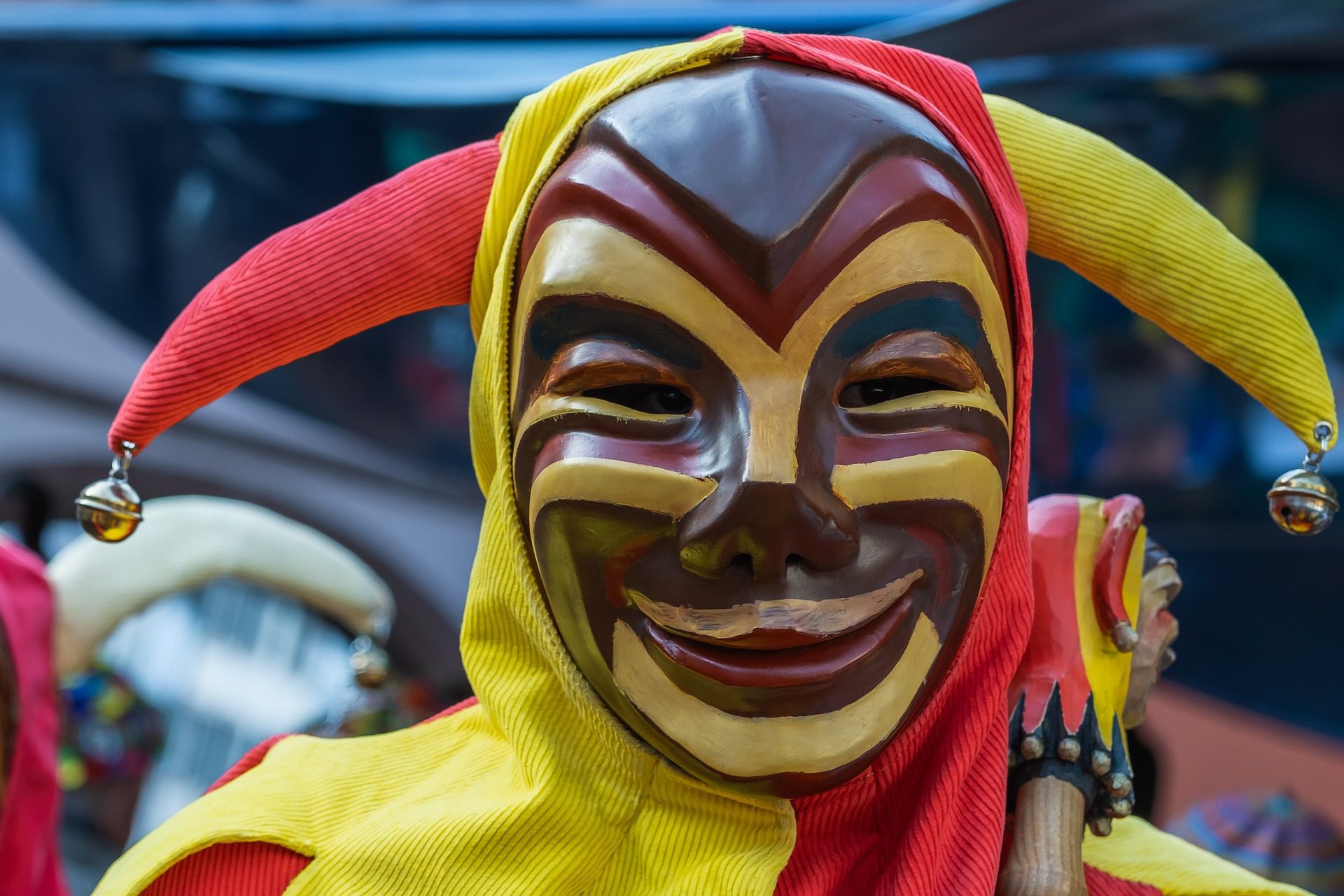

On the Fool’s Journey, we watch the Fool archetype shift and change from the naïve explorer, playful adventurer and awe inspired wanderer, spontaneous creator and storyteller, to wise elder or the Divine Fool. This happens by the Fool instinctually risking change when it is needed, reinventing self when needed, and not getting stuck in any one expression or part of self. The Fool essence in us needs to stay open and free to stay inspired to receive divine wisdom, connect to Spirit, and stay authentic.
As children, we all start off with a strong connection to this archetype. As we travel with the next 21 archetypes, through the spiral of the tarot journey, we can choose to keep our inner Fool essence alive and fresh, or we can forget that we are spiritual beings have a human experience and become attached to the form or expression of one or more of the archetypes that we meet on our growth journey. The Fool is there to remind us to travel lightly, laugh at ourselves, and stay in creative process in a free authentic way.
One of the most important tasks of the Fool is to learn to leap. When we look at a tarot deck, we see the Fool standing on the edge of a cliff, ready to leap. Leaping is no small feat. But without learning to leap we become fearful. We stay stuck in situations that we outgrow, stay with people that limit us, and environments that no longer inspire us. Leaping means we stay alive and awake in the journey of becoming. We all leap differently at different times.
As young children it may be out of sheer joy and amazement of finding out what’s around the corner. As an older child it could be driven by a desire to see what you can learn, express, and be. As a teen it may be fueled by a deep desire to find your identity and talents. As an adult it could be fueled by a desire find and follow your passion and have a meaningful and joyful life. As an elder it may be focused on finding meaning, giving back, and feeling a spiritual connection to life.
“Living is a form of not being sure, not knowing what’s next or how. The moment you know how, you begin to die a little. The artist never entirely knows. We guess. We may be wrong, but we take leap after leap in the dark.” -Agnes De Mille
What has been your history with taking risks, leaping, and living a spontaneous, adventurous life? Have you befriended your Fool or been afraid to dance with her? When I chart my Fool’s journey, I see a ride through ups and downs and sometimes leaps from dizzying heights. Twice with my partner, we sold all we owned and travelled to Europe and North Africa the first time, and the South Pacific the second time. Those leaps of faith changed our lives in wonderful rich ways. Other times I couldn’t move, leap or risk leaving friends, jobs or situations that hemmed me in and kept me in fear. Whenever I could act with my instinctive Fool energy, I could leave in the right time in the right way. When I became overwhelmed with fear, trauma, or shame I stayed in situations that caused me to suffer.
This archetype can be an ally and a friend. It can also manifest as the dark side of the Fool in your life as when you make rash unreasonable reactive decisions born out of anger, and trauma responses. It can make you want to hide in shame and disappointment when it emerges as part of you that replies in a thoughtless, hurtful, and uninformed way. We need this energy to stay in the creative flow and move through life in a fluid creative way.
Living with our Fool Archetype can be exhilarating and/or terrifying.
In the course The Fool’s Journey therapist Karen Wallace invites us to explore, through expressive therapy and several Major Arcana of the tarot, how the Fool appears in our life and what it needs to move forward. Karen’s warm creative guidance shows us how to play, create, and learn more about our past, present, and future relationship with this archetype. Learn More Here.

Karen Wallace
Karen Wallace, M.Ed, BCATR, is an expressive art psychotherapist, writer and teacher. She works to combine the mythic poetic world of tarot, poetry, and art with the world of psychology, trauma theory, and embodiment.
More Posts by Karen Wallace